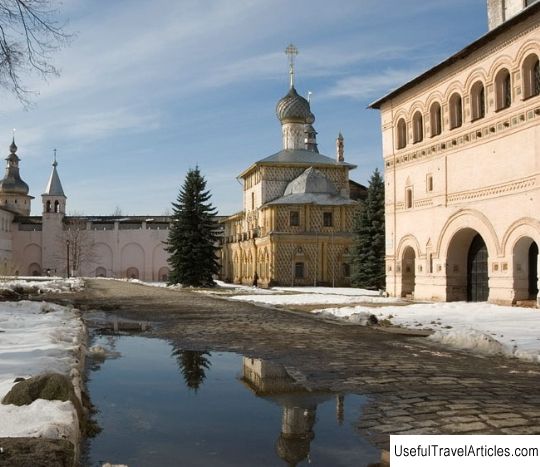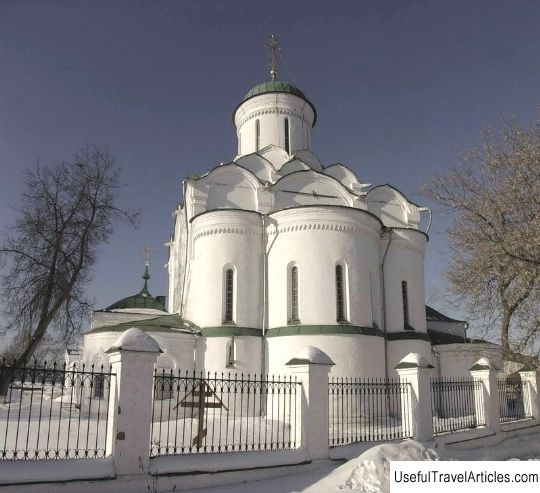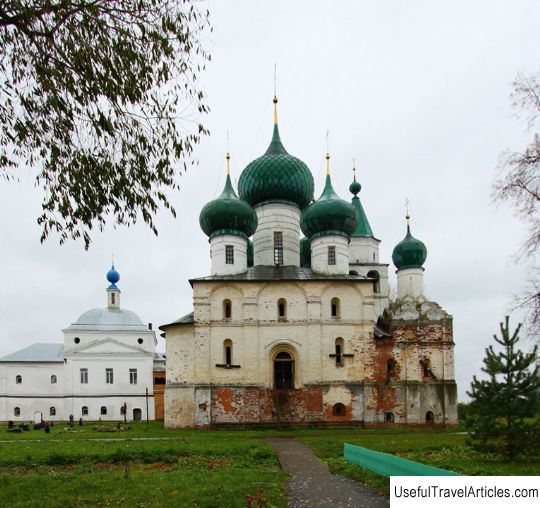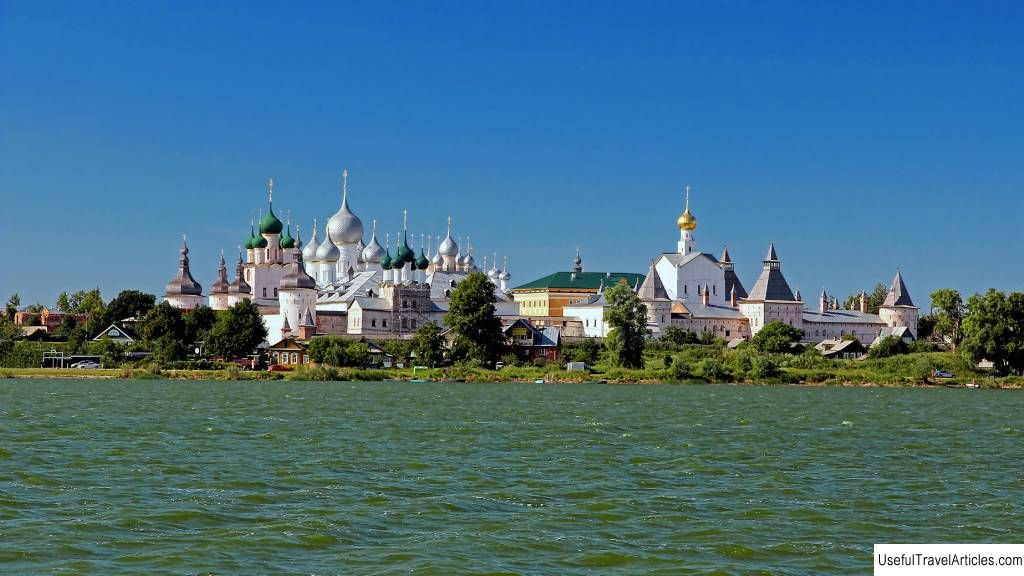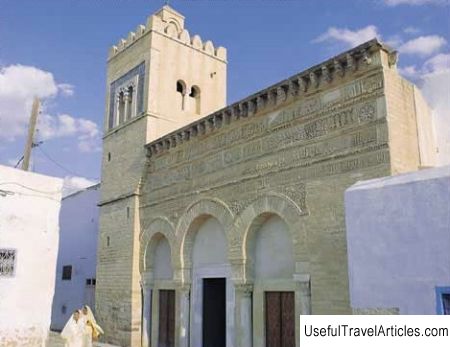Assumption Cathedral and the belfry of the Rostov Kremlin description and photos - Russia - Golden Ring: Rostov the Great
Rating: 9,5/10 (5896 votes) 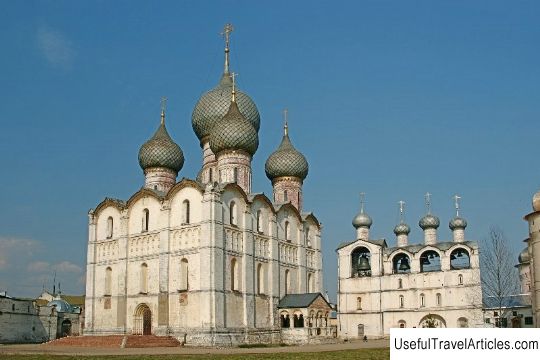
Assumption Cathedral and belfry of the Rostov Kremlin description and photos - Russia - Golden Ring: Rostov the Great. Detailed information about the attraction. Description, photos and a map showing the nearest significant objects. Photo and descriptionThe Assumption Cathedral is located on the north side of the new Bishops' court in the Rostov Kremlin. It was built in 1512. The currently existing cathedral is the fifth in this place. The first Assumption Cathedral was founded in 991 during the reign of Prince Vladimir, it was one of the first cathedrals in Russia. In 1160 the wooden church was destroyed by fire, and by order of Andrey Bogolyubsky, a white-stone church was erected on this place. At the turn of the 12-13th centuries. the abbot of this cathedral was the father of the famous Russian hero, Alyosha Popovich. The cathedral was rebuilt in 1185, and in 1204. his top collapsed. In 1213 they began to build a new temple. On June 11, 1314, the son of the Rostov boyar Cyril, the infant Bartholomew, the future Sergius of Radonezh, was baptized in the cathedral. In 1408 the cathedral burned down, many ancient books, utensils and valuable icons were lost, the frescoes were damaged. Already by 1411, the cathedral was restored with funds allocated in large quantities from the church treasury. This building was demolished in 1508 in order to build a new one on this site. Assumption Cathedral 16th century. is a truly magnificent architectural monument, worthy of the role of the central cathedral of Rostov, which was one of the main cities of Russia at that time. Its architecture is somewhat reminiscent of the Assumption Cathedral of the Moscow Kremlin. The monumental walls of the Assumption Cathedral are divided by blades from the west into three spinners, from the north and south into four. All spinners are completed by keeled zakomars. The apse is decorated with columns, which give them an upward striving. Horizontally, the temple is surrounded by a patterned arcature-columnar belt between the upper and lower rows of windows. The cathedral is crowned with five large chapters on light drums. Initially, the chapters were most likely helmet-shaped, and in the 18th century. they were replaced with bulbous ones covered with a ploughshare. In the Time of Troubles, the cathedral was captured by the Tatars and Cossacks, who were in the army of False Dmitry, Metropolitan Filaret was captured and sent in rags to the camp of the Tushino thief. Inside the cathedral is very high. In 1669 it was painted by Kostroma and Yaroslavl masters. Under these frescoes in Soviet times, restorers discovered fragments of even earlier frescoes, which were made in 1589. The Baroque iconostasis that has survived to our time was here in 1736 under Archbishop Joachim. The Assumption Cathedral contains the burial places of many princes and clergy of Rostov, including Metropolitan Iona Sysoevich, the builder of the Kremlin. When the floors were replaced in 1884, the crayfish of St. Leonty, donated to the temple by Andrey Bogolyubsky. In 1922 many valuables were removed from the cathedral, but despite this, services were held here until 1935. In 1930 ringing was banned, and in 1935 the cathedral was closed. The building was transferred to the warehouse of a coffee-cycling factory, which were located here until 1953, when a tornado severely damaged the roof and destroyed the domes. After that, the cathedral was transferred to the Rostov Museum. Until the 1990s. the temple was in a deplorable state. In 1991, divine services began in the church, and around the temple work began to remove the top layer of soil, during which fragments of the white-stone walls of a stone cathedral of the 13th century were discovered. The restoration of the Assumption Cathedral began. In 1994, the first divine service was held there. The belfry of the Assumption Cathedral was built under him in 1682-1687. in two steps. Before her, an octahedral bell tower stood on this site, its foundation was found by archaeologists on the southern side of the cathedral in 1993. The belfries of the Assumption Cathedral are mentioned in the Rostov chronicles of the 15th and 16th centuries. At the end of the 17th century. a three-span part of the belfry was erected, which was crowned with three chapters. Somewhat later, an additional pillar was added for the largest bell (weighing about 33 tons). The bell was named Sysoi in honor of the father of Iona Sysoevich, who ordered the bells. The bells on the belfry have their own names. Among them - Polyeleos, 1687, "merciful" in Greek; Golodar, 1807, he was called during Great Lent; Swan, 1687 with a beautiful voice, etc. Rostov bells are famous throughout Russia. There are even notes of various types of ringing, which are still performed today: Georgievsky, Ioninsky, Kolyazinsky.        We also recommend reading National Mosque Baitul Mukarram description and photos - Bangladesh: Dhaka Topic: Assumption Cathedral and the belfry of the Rostov Kremlin description and photos - Russia - Golden Ring: Rostov the Great. |
